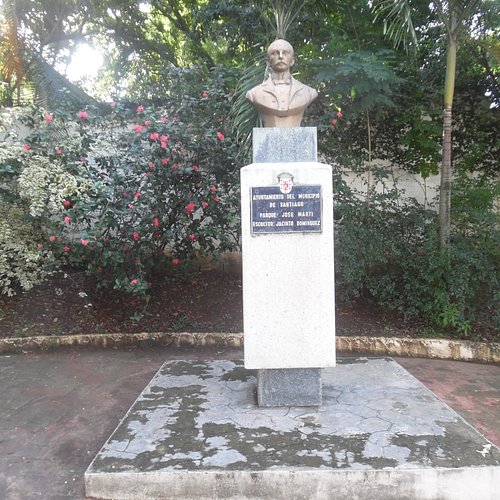What to do and see in Santiago de los Caballeros, Santiago Province: The Best Monuments & Statues
Motto(s): English, The Heart City, The first Santiago of America;
Restaurants in Santiago de los Caballeros
1. Monumento A Las Hermanas Mirabal
2. Monumento a los Heroes de la Restauracion
Overall Ratings
4.5 based on 499 reviews
Reviewed By andrewmU2655XD
The Monument to the Heroes of the Restoration is located on Av Las Carreras in the center of the city. It is the image most often associated with the city. I took a taxi from the Caribe Bus Station to visit this area. It takes an hour to visit this attraction as there are many steps, and external sculptures surrounding the site. We walked around the park and visited the external structures before climbing the steps to the main monument. On the north western section of the park is a monument to the Eagles Cibaeñas baseball team. To the right, is another sculpture of three eagles. If you walk in an easterly direction along the path, there are bronze sculptures of what is known as "Santiago traditions". They include a horse and coach with Julio Alberto Hernández (composer), Ercilia Pepín (teacher) and Tomas Morel (Bishop). The other sculptures relate to local traditions e.g. carnival costumes (Lechón Pepinero), ballet, dancing and singing. Follow the path in a southerly direction, along Daniel Espinal, and you will see the impressive equestrian monument dedicated to General Gregorio Luperon (1839-1897). It was on August 16, 1863, a rebel group led by Luperón and Santiago Rodríguez attacked the hill of Capotillo in the Dajabón province, and raised the Dominican flag. This was known as the Grito de Capotillo (Cry of Capotillo), and was the beginning of the two year "Restoration War" which resulted in Dominican independence from Spain. Luperon was the 20th President of the DR, between 1879-80. The 16th August is celebrated annually by Dominicans as their "restoration of independence" day. If you continue south on the path, you will see the Plaza de la Informacion. There are three sculptures in this area. The first is Ñico Lora shown with accordion in hand. He was a famous folk musician and considered one of the fathers of merengue. Next is Manuel del Cabral, who sits on a bench reading a newspaper. He was a poet and writer. The last sculpture is of Yoryi Morel, a painter, who stands with palette in hand. After visiting this plaza, walk up the stairs toward the main monument. The monument was built between 1944-1953, and was intended to celebrate the centenary of independence from Haiti in 1944. It was named, Trujillo’s Monument to Peace, in honour of the president. In 1961, on the death of Trujillo, the monument was renamed, "Monument to the Heroes of the Restoration", to honour the heroes of the 1863-65 war. Extensive renovations were done in 2007, when the 144th anniversary of the start of the war was celebrated, and the many bronze sculptures of former generals and presidents added. The 70 meter high tower is the highlight of the attraction, and the second floor of the building has a library and terrace offering great views of the city. This area was unfortunately closed when I visited. If you are interested in the "Restoration War", another monument can be found in Dajabon, known as the "Monument to the Grito de Capotillo".





